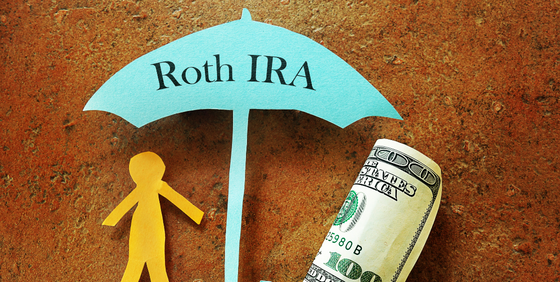
What makes Roth IRAs so appealing? Primarily, it’s the ability to withdraw money from them tax-free. But to enjoy this benefit, there are a few rules you must follow, including the widely misunderstood five-year rule.
To understand the five-year rule, you first need to understand the three types of funds that may be withdrawn from a Roth IRA:
Contributed principal. This is your after-tax contributions to the account.
Converted principal. This consists of funds that had been in a traditional IRA but that you converted to a Roth IRA (paying tax on the conversion).
Earnings. This includes the (untaxed) returns generated from the contributed or converted principal.
Generally, you can withdraw contributed principal at any time without taxes or early withdrawal penalties, regardless of your age or how long the funds have been held in the Roth IRA. But to avoid taxes and penalties on withdrawals of earnings, you must meet two requirements:
The withdrawal must not be made before you turn 59½, die, become disabled or qualify for an exception to early withdrawal penalties (such as withdrawals for qualified first-time homebuyer expenses), and
You must satisfy the five-year rule.
Withdrawals of converted principal aren’t taxable because you were taxed at the time of the conversion. But they’re subject to early withdrawal penalties if you fail to satisfy the five-year rule.
As the name suggests, the five-year rule requires you to satisfy a five-year holding period before you can withdraw Roth IRA earnings tax-free or converted principal penalty-free. But the rule works differently depending on the type of funds you’re withdrawing.
If you’re withdrawing earnings, the five-year period begins on January 1 of the tax year for which you made your first contribution to any Roth IRA. For example, if you opened your first Roth IRA on April 1, 2018, and treated your initial contribution as one for the 2017 tax year, then the five-year period started on January 1, 2017. That means you were able to withdraw earnings from any Roth IRA tax- and penalty-free beginning on January 1, 2022 (assuming you were at least 59½ or otherwise exempt from early withdrawal penalties).
Note: If you’re not subject to early withdrawal penalties (because, for example, you’re 59½ or older), failure to satisfy the five-year rule won’t trigger a penalty, but earnings will be taxable.
If you’re withdrawing converted principal, the five-year holding period begins on January 1 of the tax year in which you do the conversion. For instance, if you converted a traditional IRA into a Roth IRA at any time during 2017, the five-year period began January 1, 2017, and ended December 31, 2021.
Unlike earnings, however, each Roth IRA conversion is subject to a separate five-year holding period. If you do several conversions over the years, you’ll need to track each five-year period carefully to avoid triggering unexpected penalties.
Keep in mind that the five-year rule only comes into play if you’re otherwise subject to early withdrawal penalties. If you’ve reached age 59½, or a penalty exception applies, then you can withdraw converted principal penalty-free even if the five-year period hasn’t expired.
You may be wondering why the five-year rule applies to withdrawals of funds that have already been taxed. The reason is that the tax benefits of Roth and traditional IRAs are intended to promote long-term saving for retirement. Without the five-year rule, a traditional IRA owner could circumvent the penalty for early withdrawals simply by converting it to a Roth IRA, paying the tax, and immediately withdrawing it penalty-free.
Note, however, that while the five-year rule prevents this, it’s still possible to use a conversion to withdraw funds penalty-free before age 59½. For example, you could convert a traditional IRA to a Roth IRA at age 45, pay the tax, wait five years and then withdraw the converted principal penalty-free.
Generally, one who inherits a Roth IRA may withdraw the funds immediately without fear of taxes or penalties, with one exception: The five-year rule may still apply to withdrawals of earnings if the original owner of the Roth IRA hadn’t satisfied the five-year rule at the time of his or her death.
For instance, suppose you inherited a Roth IRA from your grandfather on July 1, 2021. If he made his first Roth IRA contribution on December 1, 2018, you’ll have to wait until January 1, 2023, before you can withdraw earnings tax-free.
Many people are accustomed to withdrawing retirement savings freely once they reach age 59½. But care must be taken when withdrawing funds from a Roth IRA to avoid running afoul of the five-year rule and inadvertently triggering unexpected taxes or penalties. The rule is complex — so when in doubt, consult a tax professional before making a withdrawal.
The consequences of violating the five-year rule can be costly, but fortunately, there are ordering rules that help you avoid inadvertent mistakes. Under these rules, withdrawals from a Roth IRA are presumed to come from after-tax contributions first, converted principal second, and earnings third.
So, if contributions are large enough to cover the amount you wish to withdraw, you will avoid taxes and penalties even if the five-year rule hasn’t been satisfied for converted principal or earnings. Of course, if you withdraw the entire account balance, the ordering rules won’t help you.
© 2022
Receive Free financial tips & Tax Alerts!
"*" indicates required fields
While many facets of the economy have improved this year, the rising cost of living and other economic factors have caused many businesses to close their doors. If this is…
Navigating a financial audit can be daunting, but with the right preparation and understanding, it can become a manageable and beneficial process. Financial audits help ensure the accuracy of your…
Planning for retirement is a crucial aspect of managing a small business. Unlike traditional employees who may have access to employer-sponsored benefits, business owners must proactively manage their retirement savings….